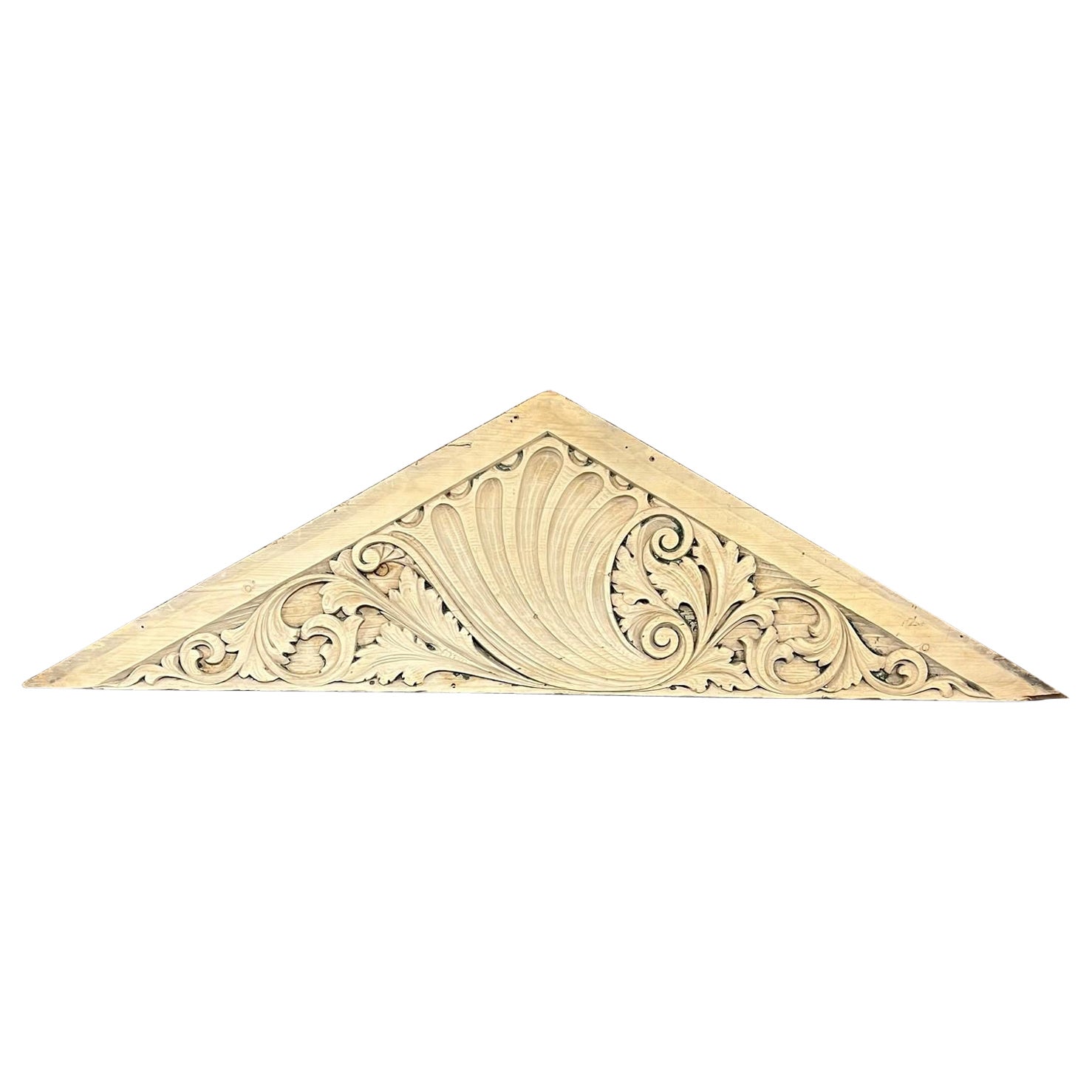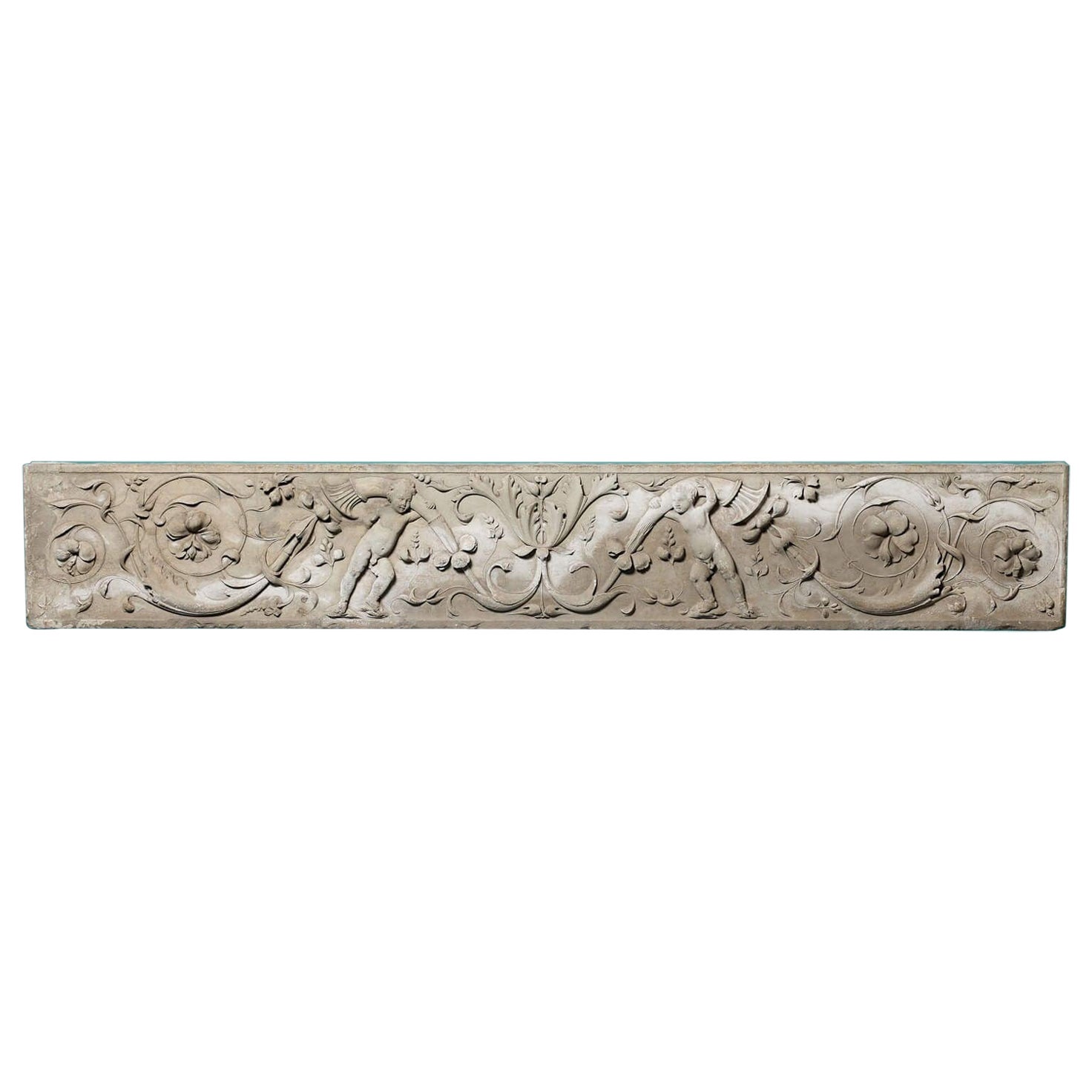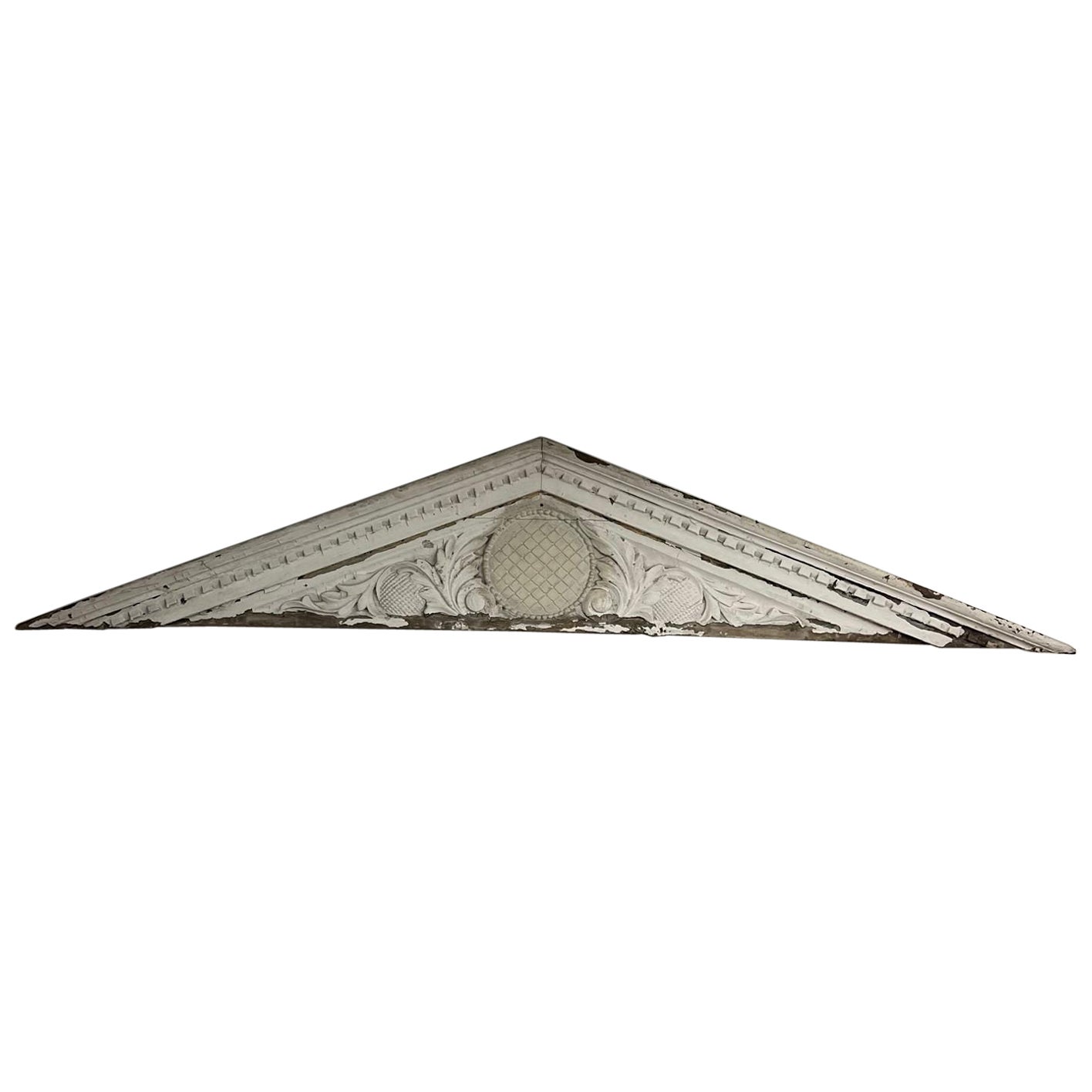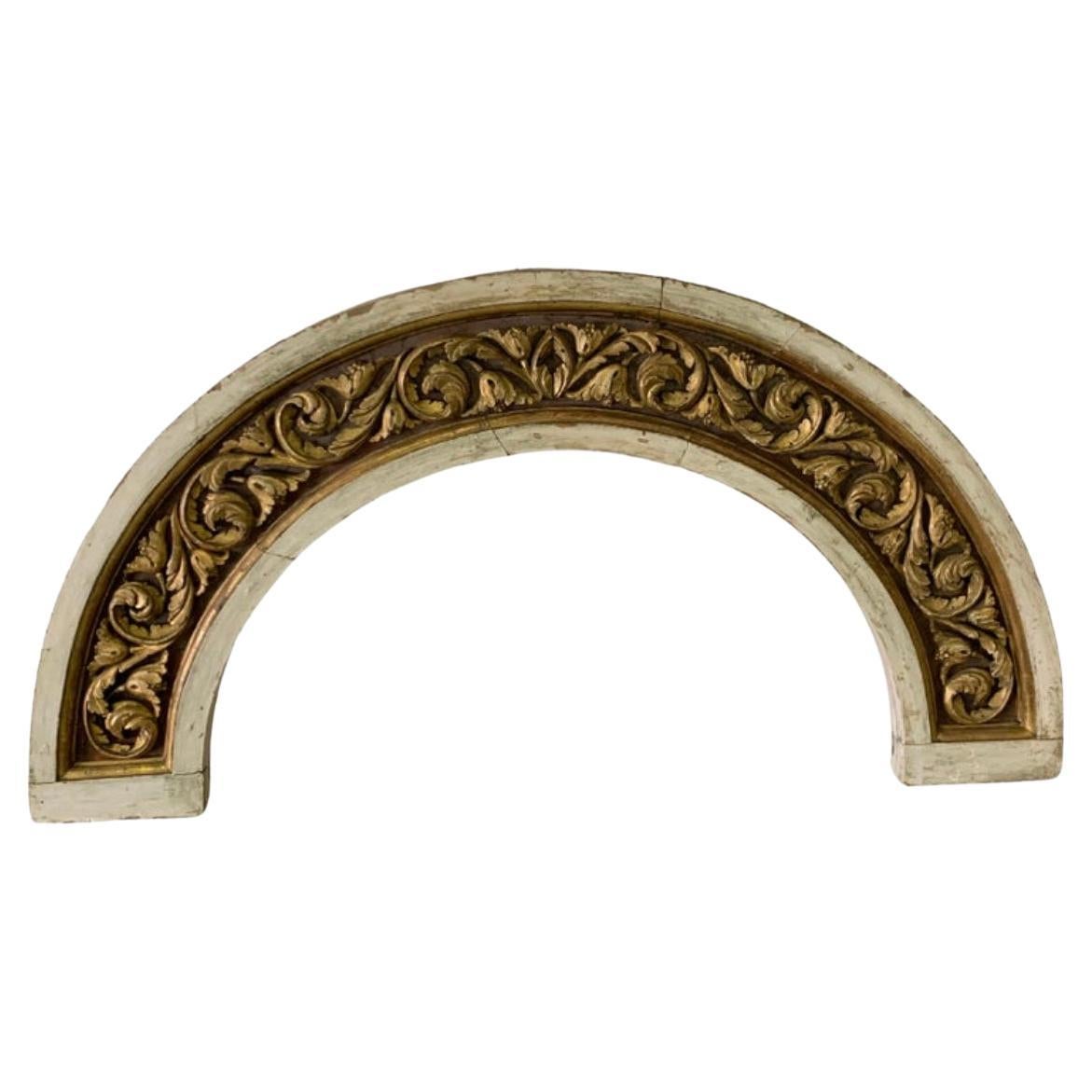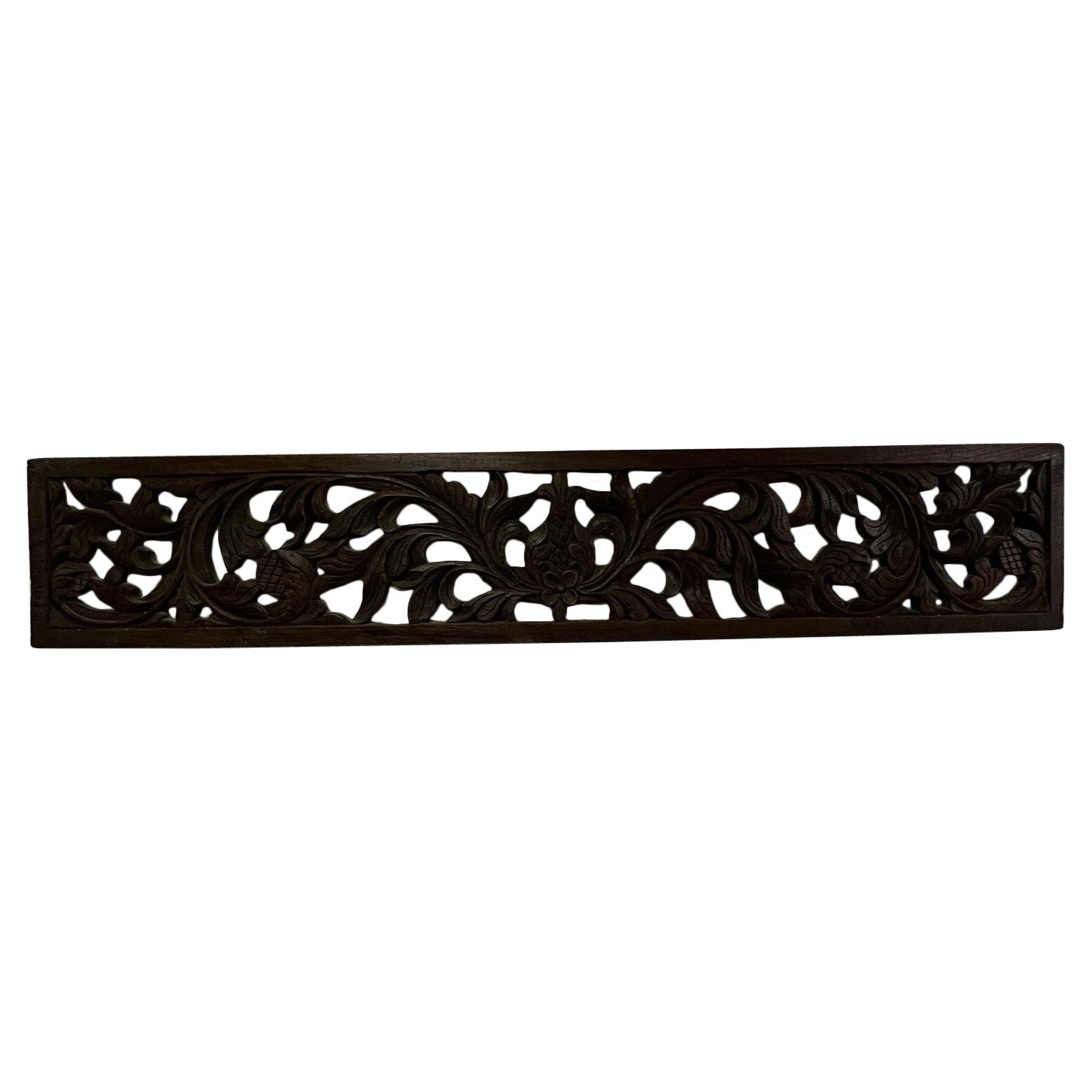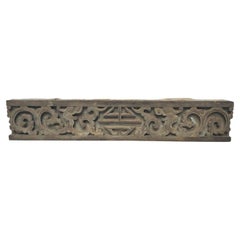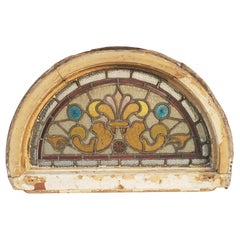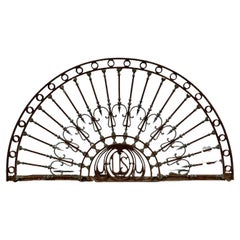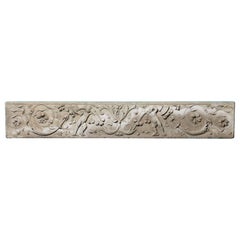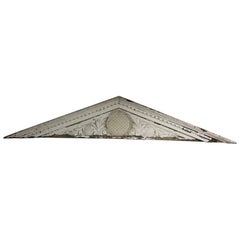Items Similar to 19th c. Chicago Stock Exchange Building Molding Fragment Architectural Element
Want more images or videos?
Request additional images or videos from the seller
1 of 18
19th c. Chicago Stock Exchange Building Molding Fragment Architectural Element
$1,500
£1,120.43
€1,298.96
CA$2,082.71
A$2,334.45
CHF 1,215.48
MX$28,504.67
NOK 15,432.19
SEK 14,628.33
DKK 9,691.63
Shipping
Retrieving quote...The 1stDibs Promise:
Authenticity Guarantee,
Money-Back Guarantee,
24-Hour Cancellation
About the Item
A rare and important hand painted plaster decorative molding fragment, by Louis H. Sullivan (American, 1856-1924), from the interior of the Chicago Stock Exchange, circa 1893-1894.
This 19th century architectural salvaged ornamental frieze was designed by distinguished architecture firm Adler & Sullivan. Collected when the Chicago Stock Exchange was demolished in 1972.
Placed on a desk, console table or shelf, this exceptionally rare sculptural building element makes for a wonderful decorative object, gift for any financial, business or historical artifact collector, or simply displayed as a interesting conversation piece.
Provenance:
Property from an Important American Collection
Acquisition:
Heritage Auction, Dallas, Texas. Fine & Decorative Arts Showcase Auction, 2021, catalog #13172
Dimensions: (approx)
10.5" Wide, 2" High, 1.5" Deep
History:
Louis H. Sullivan (American, 1856-1924)
Dankmar Adler (German born, 1844–1900)
Louis Sullivan holds a unique position in the history American architecture, not only for his accomplishments as a builder, but also for casting a long shadow of influence over many of the leading proponents of modernism, many through the figure of Frank Lloyd Wright whom he mentored early in his career.
Often called a "father of skyscrapers" and "father of modernism", among his major accomplishments were several buildings, most notably, the Chicago Stock Exchange, built in 1893 at a time when Chicago hosted the World's Fair and became known on a more international scale. Sullivan guided the overall design of the project, working with his business partner Dankmer Adler, and they created a masterpiece of intricate detail from the floor to the ceiling, following Sullivan's concept of organic ornamentation. The trading room of the Stock Exchange was a particularly significant space, and Sullivan conceived of oil painted stencils to line the walls in order to give depth of color and space through use of complex Celtic revival patterns.
The building was demolished in 1972 and many of the works were salvaged and are today represented in important public collections including the Metropolitan Museum of Art, New York, The Museum of Modern Art, New York, the Art Institute, Chicago and the Seattle Art Museum among others. The largest of the stencils in this sale was formerly in the collection of the Art Institute.
Other works from the collection include works from other remarkable Sullivan and Adler buildings, though the focal point, are rare works from the Chicago Stock Exchange, their most important achievement.
Dankmar Adler was a world renowned German born American architect and civil engineer. He is best known for his fifteen-year partnership with Louis Sullivan, during which they designed influential skyscrapers that boldly addressed their steel skeleton through their exterior design: the Wainwright Building in St. Louis, Missouri (1891), the Chicago Stock Exchange Building (1894), and the Guaranty Building in Buffalo, New York (1896).
Condition:
Good condition overall. Various segments, all presents well, with nicely aged patina, desirable rich antique character including some minor scuffs or scratches, scattered flakes or chips, rubbing, flaking to painted surface, some with previous repairs, fills in areas, otherwise good, all wear commensurate with age.
- Dimensions:Height: 2 in (5.08 cm)Width: 10.5 in (26.67 cm)Depth: 1.5 in (3.81 cm)
- Style:Industrial (In the Style Of)
- Materials and Techniques:
- Place of Origin:
- Period:
- Date of Manufacture:1894
- Condition:Wear consistent with age and use. Minor losses. Presents well, with nicely aged patina, desirable rich antique character including some minor scuffs or scratches, scattered flakes or chips, rubbing, flaking to painted surface, some with previous repairs, fills in areas, commensurate with age.
- Seller Location:Forney, TX
- Reference Number:1stDibs: LU5977226683252
About the Seller
4.8
Platinum Seller
Premium sellers with a 4.7+ rating and 24-hour response times
Established in 2013
1stDibs seller since 2021
290 sales on 1stDibs
Typical response time: 1 hour
- ShippingRetrieving quote...Shipping from: Forney, TX
- Return Policy
Authenticity Guarantee
In the unlikely event there’s an issue with an item’s authenticity, contact us within 1 year for a full refund. DetailsMoney-Back Guarantee
If your item is not as described, is damaged in transit, or does not arrive, contact us within 7 days for a full refund. Details24-Hour Cancellation
You have a 24-hour grace period in which to reconsider your purchase, with no questions asked.Vetted Professional Sellers
Our world-class sellers must adhere to strict standards for service and quality, maintaining the integrity of our listings.Price-Match Guarantee
If you find that a seller listed the same item for a lower price elsewhere, we’ll match it.Trusted Global Delivery
Our best-in-class carrier network provides specialized shipping options worldwide, including custom delivery.More From This Seller
View AllAntique Asian Architectural Relief Carved Stone Frieze Panel
Located in Forney, TX
An exceptional architectural high relief hand carved stone band of running scroll decoration frieze panel, with beautiful scrollwork, representing wind or water, and mythological creature, perhaps a dragon or grotesque griffin. The characters in the center may be Asian hieroglyphs (Japanese kanji). The top side has a dovetail joinery cutout from where it would have attached and fit into place before cementing it in place. 19th century or earlier.
This antique architectural salvage building element is a beautiful and artful display of history, and a quick way to add texture, character, rustic charm and interest. Will make a wonderful decorative object within your home or office.
Provenance:
Personal property of Genshiro Kawamoto. A Japanese real estate billionaire and avid art collector who owned numerous multi-million dollar properties in Hawaii and was building one of the most expensive homes in Hawaii prior to his tax evasion arrest, followed by prison sentence in Japan. He had bought multiple properties to convert into museums in order to display his personal decorative arts collection, but due to his legal and financial problems, his items were all auctioned...
Category
Antique 19th Century Asian Architectural Elements
Materials
Stone
18th/19th Century English Georgian Period Fireplace Fender
Located in Forney, TX
A large, over five foot long, antique Georgian pierced brass fireplace hearth fender with beautifully aged patina. Create a stunning focal point with thi...
Category
Antique Late 18th Century English Georgian Fireplace Tools and Chimney Pots
Materials
Brass, Iron
Antique French Victorian Architectural Stained Glass Transom Window
Located in Forney, TX
An absolutely beautiful French Victorian antique stained glass panel arched transom window that must be viewed in person to truly capture t...
Category
Antique Late 19th Century European Victorian Windows
Materials
Stained Glass, Wood
Antique US Embassy Architectural Arched Iron Fanlight Header
Located in Forney, TX
A rare and important late 19th / early 20th century American classical arched iron architectural fanlight header salvaged from a United States Embassy.
Monumental size, lunete form, exceptionally executed stylized sunburt-like pediment sculpture with central "US" set within a circle, two-tone rustic heavily patinated and verdigris green patina finish.
The large antique architectural salvaged decorative building element makes for fascinating sculptural object, wall decor, garden ornament gate trellis...
Category
Early 20th Century American Empire Architectural Elements
Materials
Iron
Rustic 19th Century Mexican Farmhouse Architectural Window Shutter
Located in Forney, TX
Charming small rustic antique Mexican farmhouse wooden hinged window / shutter, solid pine with mortise and tenon joinery, original hardware and lock, re...
Category
Antique 19th Century Mexican Rustic Windows
Materials
Iron
Antique French Louis XV Style Gilt Bronze Chenets Fire Fender
Located in Forney, TX
A fabulous French antique gilt-bronze adjustable (33" to 45" long) three-piece suite fireguard dating to the 19th century.
Finished in refined, elegant and luxurious Louis XV style,...
Category
Antique 19th Century French Louis XV Andirons
Materials
Metal, Bronze
You May Also Like
Cast Iron Ornate Frieze NYC Building Cornice Foliage Details
Located in New York, NY
Circa 1900, cast iron frieze with foliage details. This was originally part of a NYC building cornice before it was reclaimed. It has a natural patina...
Category
Early 20th Century American Victorian Architectural Elements
Materials
Iron
$2,400 Sale Price
20% Off
19th Century Antique Carved Wood House Overdoor Architectural Pediment
Located in Stamford, CT
Late 19th century antique architectural house overdoor carved wood pediment. The pediment came from an old Victorian home in Buffalo NY. and has been st...
Category
Antique Late 19th Century American Architectural Elements
Materials
Wood
$1,440 Sale Price
20% Off
Large Antique Italian Renaissance Style Stone Frieze
Located in Wormelow, Herefordshire
A large antique Italian stone chimney piece frieze dating to circa 1800.
Originally salvaged from a monumental scale fireplace, this frieze displays fine carving in relief depicting...
Category
Antique Early 19th Century Italian Renaissance Architectural Elements
Materials
Stone
Late 19th Century Antique Architectural Carved Wood Overdoor Pediment
Located in Stamford, CT
Late 19th century, architectural antique carved wood overdoor pediment. Salvaged from a late 19th century Victorian home in New Haven Ct. The pedimen...
Category
Antique Late 19th Century American Architectural Elements
Materials
Wood
$1,320 Sale Price
20% Off
19th Century Tuscan Renaissance Fragment
Located in San Angelo, TX
This is a beautiful 19th century Tuscan Renaissance fragment. Perfect for placement above your mantle, stove, a bed, or use it to dress up a wall b...
Category
Antique 19th Century Italian Renaissance Architectural Elements
Materials
Wood, Paint
19th Century Architectural Antique Transom Wood Panel Pierced Carved
Located in Stamford, CT
Beautiful pierced carved wood architectural panel from a large estate in Long Island NY. I believe it was part of a paneled room possibly a l...
Category
Antique 19th Century American Architectural Elements
Materials
Wood
$1,080 Sale Price
20% Off
More Ways To Browse
Antique Buildings
Modern Architecture Art
The Modern Exchange
Antique Molding
Used Steel Buildings
Used Furniture In Chicago
American Of Chicago Furniture
Plaster Architecture
Architectural Frieze
Antique Furniture In Chicago
Plaster Fragment
Circa Modern Chicago
Painted And Stenciled Furniture
Industrial Salvage
Antique Industrial Scale
Antique Painted Ceiling
Used Desks Chicago
Desk Chicago

